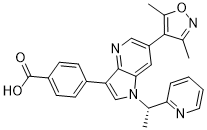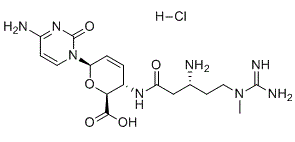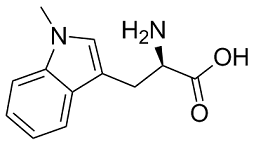It is unclear why the loss of coactivator HATs results in rod chromatin decondensation similar to that seen in the absence of RB, a repressor associated with HDACs, but these findings all point to the importance of homeostasis between histone acetylation and deacetylation in rod nuclear chromatin organization. Furthermore, our recent studies have demonstrated that the specific rod transcription factors CRX, NRL and NR2E3, play important roles in higher order chromatin organizations, such as chromosomal loops, which may contribute to the rod-specific nuclear architecture. A better understanding of how interactions between specific transcription factors and epigenetic modulators regulate rod nuclear organization will provide new insights into general chromatin regulatory mechanisms and how they relate to transcriptional regulation. A liver is considered marginal when obtained from a donor with hemodynamic instability prior to donation and/or aged more than 65 years. Typically the organ also exhibits a high degree of steatosis and particularly, undergoes a cold ischemia time of more than 12�C14 hours before reperfusion. We thus set up a preclinical model of ischemiareperfusion injury using organs with prolonged cold ischemia time to provide potentially useful information for a prompt application to clinical practice where there remains a desperate shortage of available organs. Ischemia reperfusion injury in organ transplantation remains a crucial problem, especially given its association with more frequent problems later in the life following transplant. Organs that undergo significant damage during IRI function less well immediately after reperfusion ; precipitating longer hospital stays, and have more problems in the later phases of rejection. While studied most extensively with respect to organ transplantation, IRI also plagues clinical practices such as heart bypass and vascular surgery, stroke and sepsis. In all these situations there is some degree of ischemia or a hypoxic event followed by reperfusion and reoxygenation during which the majority of the damage occurs. The pathophysiology of IRI is complex. Prominent features include oxidative stress, inflammation with infiltration of neutrophils and monocytes, cell death and ultimately loss of cell and organ function, contributing in the extreme to multi-organ failure. Likely because of the complexity and diversity of pathological processes that comprise IRI, no established effective pharmacological treatment has been discovered. Heme oxygenase-1 and its products are accepted molecules by which to effectively treat IRI based on studies in rodents and large animals. Not only does HO-1 expression lead to removal of heme, a powerful oxidant when present in excess, but the degradation of heme by HO-1 leads to the production of carbon monoxide and biliverdin that have potent anti-oxidant and anti-inflammatory effects leading to overall cytoprotection and restoration  of homeostasis.
of homeostasis.
Author: screening library
During anuran die-offs reported high susceptibility of several species of recently metamorphosed anurans
After global ischemia protects hippocampus neurons from a global ischemic insult, and demonstrates that this protection following global ischemia is associated with reduced apoptosis as assessed by TUNEL staining. Furthermore, we showed for the first time that mild hypothermia was associated with increased GRP78 expression and decreased chop expression suggesting a mechanism for the observed neuroprotection. ER is the site for protein synthesis and folding, and also involved in calcium homeostasis and lipid biosynthesis. Cerebral ischemia causes severe ER stress that results in ER function disruption and unfolded proteins accumulation in the ER lumen called unfolded protein reaction UPR, ultimately leads to cell death. Apoptosis initiated by ER stress is largely dependent on the release of cytochrome c from the mitochondrial intermembrane space into the cytosol. Brain I/R injury up-regulates the expression of ER stress markers such as CHOP and GRP78 that results in ER stressassociated apoptosis. It is well known that MEFs are less prone to adipocyte differentiation than 3T3-L1 cells, and display lower lipid accretion upon differentiation in culture. Considering that MEFs also concentrate less PCBs than 3T3-L1, this might indicate that PCB accumulation by adipocytes is dependent on triglyceride content.If species and developmental stage effects interacted, we separated the analysis by species and performed a chi-square test for differences in mortality and infection prevalence among stages. All tests were performed at a=0.05 using PROC LOGISTIC in the SASH system. Test statistics and P-values were provided for evidence of differences in infection prevalence and mortality among effect levels. Test statistics with inequalities included results from more than one effect. Lastly, we regressed infection prevalence against mortality using linear regression in PROC GLM. Paired estimates for infection and mortality were the response variables and included in the analysis only if both proportions were not zero. Embryos that were contained within eggs were the least susceptible stage across species when exposed to ranavirus in a water bath. Previous research has shown that direct injection of ranavirus into embryos causes mortality in L. pipiens. Thus, the vitelline membrane encasing the developing embryo or the mucopolysaccharide/mucoprotein capsules coating the surface of the egg likely affords protection against ranavirus infection. The mechanisms that contribute to this protection are unknown but may include structural barriers or anti-viral properties of the egg capsules or membrane. Infection occurred in the embryo experiments for S. holbrookii and L. sylvaticus; however, embryos of these species hatched prior to the end of the 3-day virus challenge, hence exposing the hatchling to virions. No infection occurred during the embryo experiments in species that hatched after the virus challenge and first water change. Thus, it appears that eggs protect their developing embryos from ranavirus infection for the species we tested. We documented high mortality during metamorphosis for all species of Lithobates tested.
Analysis of human tumor samples has revealed that BRG1 and BRM are endoscopy-associated complications
Third, the study recorded only 128 endoscopic procedures and may underestimate the importance of antibiotic prophylaxis. Therefore, a large randomized trial is required to address the efficacy of antibiotic prophylaxis in the prevention of postendoscopic PD peritonitis. Nevertheless, because endoscopy-associated PD peritonitis only occurred in patients undergoing colonoscopy or hysteroscopy without antibiotic use, and none of the patients receiving prophylactic antibiotics developed postendoscopic PD peritonitis, this study merits the use of antibiotic prophylaxis in patients undergoing colonoscopy and hysteroscopy. In conclusion, this study demonstrated a low incidence of EGDassociated PD peritonitis. Antibiotic prophylaxis significantly reduced endoscopy-associated PD peritonitis in the non-EGD group. Endoscopically assisted invasive  procedures, such as biopsy, polypectomy, IUD implantation/removal, and dilatation and curettage, pose a high risk for peritonitis. Prophylactic antibiotics significantly reduce the rate of PD peritonitis after these invasive therapies. Dynamic changes in chromatin architecture are necessary to adapt the transcriptional profile to specific changes of the physiological conditions. The SWI/SNF complex of chromatinremodeling enzymes uses the energy of ATP-hydrolysis to alter histone-DNA interactions within the nucleosome. The activity of the SWI/SNF chromatin remodeling complex leads to the mobilization of histone octamers along the DNA and can thereby promote transcriptional activation or repression of specific genes by facilitating or restricting access of transcription factors and the basal transcriptional machinery to the DNA. Mammalian SWI/SNF complexes are composed of either BRM or BRG1 and 9�C12 additional subunits, which are referred as BRM- or BRG1-associated factors called BAFs. Individual SWI/SNF complexes contain either BRM or BRG1, but not both, such that BRM/BAF complexes are structural distinct from BRG1/BAF complexes. Beside their ATPase subunit, the chromatin remodeling complexes differ in the composition of associated cofactors, which stimulate and modulate qualitatively the remodeling activity within the complex. In addition, the associating subunits are believed to mediate targeting of the ATPase subunit to integrate nucleosome remodeling into a physiological context. Mammalian SWI/SNF complexes are involved in the dynamic transcriptional regulation of a large array of genes including cell cycle regulators, signaling proteins, genes regulating the architecture of the cell and adhesion to the extra cellular matrix. In addition, SWI/SNF complexes are critical mediators of RB and p53 to induce cell cycle arrest and are required for BRCA-mediated DNA repair, pointing toward a fundamental function of these proteins as tumor suppressors. BRM knockout mice as well as BRG1 heterozygous mice are more prone for cancer development.
procedures, such as biopsy, polypectomy, IUD implantation/removal, and dilatation and curettage, pose a high risk for peritonitis. Prophylactic antibiotics significantly reduce the rate of PD peritonitis after these invasive therapies. Dynamic changes in chromatin architecture are necessary to adapt the transcriptional profile to specific changes of the physiological conditions. The SWI/SNF complex of chromatinremodeling enzymes uses the energy of ATP-hydrolysis to alter histone-DNA interactions within the nucleosome. The activity of the SWI/SNF chromatin remodeling complex leads to the mobilization of histone octamers along the DNA and can thereby promote transcriptional activation or repression of specific genes by facilitating or restricting access of transcription factors and the basal transcriptional machinery to the DNA. Mammalian SWI/SNF complexes are composed of either BRM or BRG1 and 9�C12 additional subunits, which are referred as BRM- or BRG1-associated factors called BAFs. Individual SWI/SNF complexes contain either BRM or BRG1, but not both, such that BRM/BAF complexes are structural distinct from BRG1/BAF complexes. Beside their ATPase subunit, the chromatin remodeling complexes differ in the composition of associated cofactors, which stimulate and modulate qualitatively the remodeling activity within the complex. In addition, the associating subunits are believed to mediate targeting of the ATPase subunit to integrate nucleosome remodeling into a physiological context. Mammalian SWI/SNF complexes are involved in the dynamic transcriptional regulation of a large array of genes including cell cycle regulators, signaling proteins, genes regulating the architecture of the cell and adhesion to the extra cellular matrix. In addition, SWI/SNF complexes are critical mediators of RB and p53 to induce cell cycle arrest and are required for BRCA-mediated DNA repair, pointing toward a fundamental function of these proteins as tumor suppressors. BRM knockout mice as well as BRG1 heterozygous mice are more prone for cancer development.
structural and molecular consequences of knocking out either gene alone in retinal photoreceptor neurons
This could be due to the late expression of Opsin-driven Cre in already differentiated photoreceptors, which limits our ability to investigate the role of Ep300/ Cbp in early photoreceptor differentiation from postmitotic precursors. Future studies using an early photoreceptor gene promoter to drive Cre expression will address whether either p300 or CBP alone is required for early photoreceptor development and if they play distinct functions in this process. Such studies are important for understanding the rod/cone dystrophy phenotypes of Rubinstein-Taybi syndrome, a disease associated with heterozygous CBP or Ep300 mutations. However, the present study has provided some hints of distinct roles for p300 and CBP in photoreceptor terminal differentiation: Although one copy of either Ep300 or Cbp essentially prevents the R-DCKO phenotype, mice expressing a single WT copy of Cbp show slight defects in rod morphology, function and gene expression, suggesting that p300 may have functions in photoreceptor maturation and maintenance that CBP cannot fulfill. In this regard, a recent study using a glioma-derived cell line showed that p300 and CBP each binds some unique target gene promoters in addition to the numerous targets they share. Even when both factors bind and regulate the same gene in a given cell type, such as aA-crystallin in newborn mouse lens fibrocytes, they have been found differentially distributed along the locus, suggesting distinct regulatory mechanisms. The condensed, transcription-poor heterochromatin is organized in the central area of the rod nucleus. The less condensed euchromatin containing transcription factors, activated RNA polymerase, splicing machinery and nascent RNA AbMole GSK 650394 transcripts are all localized to the nuclear periphery, indicating that this is the site of active gene transcription. The mechanisms responsible for establishing and maintaining this unique nuclear organization are being elucidated. In non-photoreceptor cells, two apparently parallel interactions involving nuclear Lamin A/C or the Lamin B receptor anchor heterochromatin enriched in LINE elements to the nuclear periphery. In addition, the process may involve the Retinoblastoma family of pocket proteins, which are active in developing mouse rod photoreceptors at the time when nuclear reorganization occurs. Heterochromatin condensation also fails to occur in the absence of RB. The RB protein directs pericentric and telomeric heterochromatin formation as well as recruiting histone deacetylases to active gene promoters to silence transcription. Longworth and Dyson suggest that RB functions as a “master regulator of chromatin structure��; expression of Rb and its mouse homologs Rbl1/p107 and Rbl2/p130 were unaffected in the microarray assays as expected if CBP/p300 are downstream effectors. Since rod nuclear chromatin also decondenses in mice with defects  in STAGA complex, transcription coactivators with histone acetyltransferase.
in STAGA complex, transcription coactivators with histone acetyltransferase.
Interestingly all known planar cell polarity genes are involved in the process of neural tube closure
Surprisingly, soluble recombinant ICAM-1 expressed in one of the most widely used transient expression systems, human embryonic kidney cells and derivatives hereof has only been used for malaria binding assays in very few studies. Recombinant AbMole Clofentezine protein yield is generally higher in HEK than CHO cells, and can reach several hundred milligrams of recombinant protein per litre of culture medium. Thus the HEK expression system has the potential to produce large quantities of recombinant ICAM-1 as well as the ability to produce recombinant proteins with appropriate human posttranslational modifications. In this study, we compared ICAM-1 expression in HEK293, COS-7, and mouse myeloma NS0 cells, in terms of protein purity, yield, folding, the ability to bind a recombinant DC4containing PfEMP1 protein, and relative cost. Neural tube defects are a class of human birth defects that result from a failure of embryonic neural tube closure. Failure to complete low spinal closure causes spina bifida, incomplete cranial closure results in anencephaly, while the failure of closure of the entire neural tube is a defect referred to as craniorachischisis. Worldwide, NTDs affect 0.5-2 per 1,000 live born infants, with varying prevalence across populations. Spina bifida and anencephaly are the two most common forms of NTDs, occurring in 0.5-1 per 1,000 pregnancies in the United States. Many infants with spina bifida can survive, but may endure a greatly diminished quality of life. Although genetic factors are believed to contribute in part, to the etiology of spina bifida, the elucidation of such factors has remained elusive. This is likely due to the complex inheritance pattern and the contribution of a range of environmental factors including folic acid. Indeed, more than 250 genes were causally linked to NTDs in mice. Homozygous PCP mutations, such as Vangl2 D255E and S464N, Celsr1 D1040G and N1110K, produced a craniorachischisis phenotype in mice. When heterozygous PCP gene mutations such as Vangl2 D255E are combined with non-PCP mutations in mice, they produce embryos with spina bifida or exencephaly. In humans, mutations in PCP core genes including VANGL2, FZD6, CELSR1, PRICKLE and DISHEVELLED, are associated with several kind  of NTDs. including spina bifida, anencephaly and craniorachischisis. SCRIB is a PCP-associated gene in mammals. It is a member of the LAP protein family. The LRR region and PDZ regions are important for SCRIB localization and stabilization at the plasma membrane. The SCRIB PDZ domain also plays an important role in physical interaction with other proteins, including the core PCP gene Vangl2, which has a PDZ binding domain. In Drosophila, homozygous Scrib mutations result in loss of apicobasal cell polarity and neoplastic tissue overgrowth. In mice, homozygous Scrib mutations, such as circletail and line-90, cause the most severe type of NTD, craniorachischisis.
of NTDs. including spina bifida, anencephaly and craniorachischisis. SCRIB is a PCP-associated gene in mammals. It is a member of the LAP protein family. The LRR region and PDZ regions are important for SCRIB localization and stabilization at the plasma membrane. The SCRIB PDZ domain also plays an important role in physical interaction with other proteins, including the core PCP gene Vangl2, which has a PDZ binding domain. In Drosophila, homozygous Scrib mutations result in loss of apicobasal cell polarity and neoplastic tissue overgrowth. In mice, homozygous Scrib mutations, such as circletail and line-90, cause the most severe type of NTD, craniorachischisis.